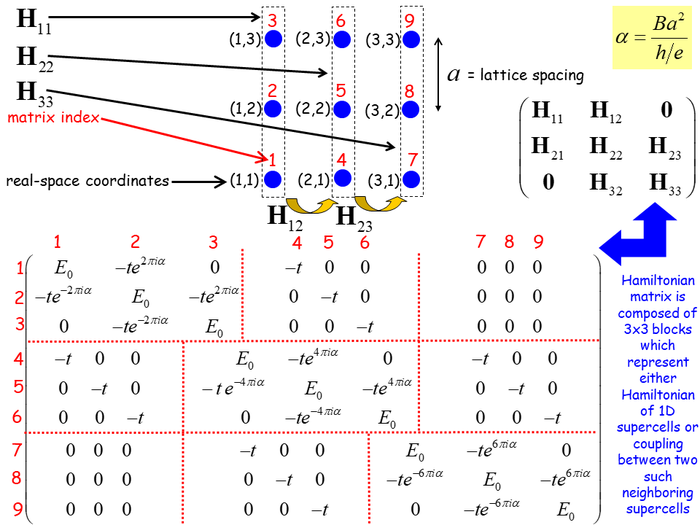How to put magnetic field into tight-binding Hamiltonian
From phys824
Jump to navigationJump to search
Magnetic field in classical physics
Using Newton second law
- Lorentz force on charge particle: .
- Force on magnetic moment: .
Using Hamiltonian formalism
- Free particle: .
- Particle in magnetic field (replace kinetic with canonical momentum): .
Magnetic field in quantum mechanics
- Convert c-numbers into operators in the classical Hamiltonian: , where is the vector of Pauli matrices, is the gyromagentic ratio and is the Bohr magenton.
- Assuming , we see that , which suggests that vector potential can equivalently be introduced into the Hamiltonian using . This is derivation can be used only as a hint of heuristic value since means that .
Heuristic version of the Pierls substitution to introduce magnetic field into tight-binding Hamiltonian
- Continuing with the trivial case , we see that tight-binding Hamiltonian:
will be transformed into
by the introduction of constant vector potential.
Exact version of the Pierls substitution to introduce magnetic field into tight-binding Hamiltonian
The correct result for the tight-binding hopping modified by the so-called Peierls substation looks similar to heuristic expressions above, except that one has to integrate along the line joining the two sites:
since vector potential is never homogeneous for non-zero magnetic field.
Example of magnetic field in tight-binding Hamiltonian
- Assuming a homogeneous magnetic field orthogonal to the plane of 2D lattice, , and gauge in which , the matrix of the tight-binding Hamiltonian is shown below explicitly:

References
- J. G. Analytis, S. J. Blundell, and A. Ardavan, Landau levels, molecular orbitals, and the Hofstadter butterfly in finite systems, Am. J. Phys. 72, 5 (2004).